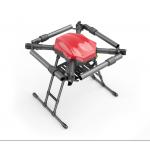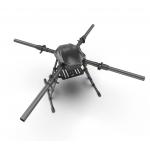Product Background
Demand-driven application: With the widespread use of drones in
various fields, such as logistics transportation, agricultural pest
control, power inspection, and environmental monitoring, higher
requirements have been imposed on their carrying capacity. For
instance, in the logistics sector, drones need to carry a certain
weight of goods to complete last-mile delivery; in agricultural
pest control, they need to carry sufficient pesticides or
fertilizers for large-scale spraying. A carrying capacity of 10
kilograms can well meet these demands, thus giving rise to
corresponding drone frames with such carrying capacity.
Policy environment support: Various ministries and commissions such
as the National Development and Reform Commission and the Ministry
of Transport have successively introduced supporting policies,
gradually opening up low-altitude airspace pilot programs and
improving infrastructure construction, paving the way for the
large-scale development of emerging industries like low-altitude
logistics. Under this background, enterprises actively developed
drones suitable for related applications. The 10-kilogram drone
frame, as a key component, also received more investment and
application promotion.
Materials and Technological Progress: The development of materials
science has provided a foundation for the design and manufacture of
10-kilogram drone frames. The wide application of high-strength and
lightweight materials such as carbon fiber and aluminum alloy has
enabled the frames to have sufficient carrying capacity while
minimizing their own weight, thereby enhancing the overall
performance of the drone. At the same time, advancements in
precision processing and assembly techniques have made the frame
structure more reasonable and more stable.
Design Concept Innovation: To better meet market demands, the
design concept of drone frames has been continuously innovated. For
example, by combining a small number of aluminum alloy connectors
with carbon tubes, it is possible to reduce the weight of the
fuselage while ensuring the load-bearing capacity and structural
stability, and also lowering the manufacturing cost. In addition,
the frame design often adopts X-shaped or H-shaped layouts to
optimize aerodynamic performance, reduce flight resistance, and the
key components such as the arms will be reinforced to ensure stable
flight even under a 10-kilogram heavy load.
Market competition drive: The drone market is highly competitive.
Companies strive to secure a larger share of the market by
constantly launching products with superior performance. The drone
frame with a 10-kilogram payload capacity enables the drone to be
applied in more scenarios and meet the needs of more customers,
thereby enhancing the product competitiveness. This has prompted
many drone enterprises to invest resources in the research and
production of such frames.
Product parameters
| Developed size | 1470*1690*600mm |
| Folding size | 850*960*600mm |
Product display











